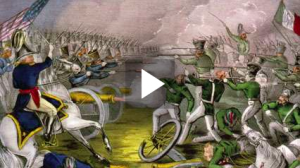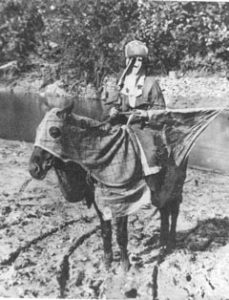Introduction
The 19th century was the most ambitious period in American history as westward expansion took place. Although America triumphed past adversities; slavery, wars and economic depression, Manifest Destiny was one of the greatest achievement as a nation. This bold ambition brought in the early 1800’s led by President Thomas Jefferson was a catalyst for huge economic and social benefits(Frederick Merk, 1963.) Although there were hundreds of thousands negatively affected by this movement, the gain was so much greater than any other aspect. On the contrary, America’s economic benefits were drastic in that production, urbanization, and the Industrial Revolution all were greatly enhanced with the growth of over a million acres of land to settle and extract. Urbanization increased where the mid-west and western regions would become huge sources of mineral mining and business. Finally, the Industrial Revolution produced huge leaps in getting the materials needed for building roads and railroads leading to the expansion of markets. Nevertheless, Manifest Destiny was the sole foundation in making America a remarkable economic powerhouse and being the driving force responsible in changing United States’ history. Furthermore, this event helped mold the accomplishments in the ladder half of our nation’s existence.
While Manifest Destiny was mostly progressive, there were many groups that were disadvantaged by its repercussions. Such groups included Native Americans and those living under Spanish rule around the Texas region. During American expansionism, the US military would forcibly relocate around 70,000-100,000 Native Americans into newly formed reservations (Olson-Raymer 2014, 2.) Those who accepted American colonization would struggle in assimilating to this new cultural norm. In another occurrence, the Spanish-American War was exemplary of the nation’s imposing their dominant presence. With an increase in population and military, there was no surprise that at the time Spain, now Mexico, had to give up such a large portion of land. The United States would continue fighting for plots of land to accomplish the movement from coast to coast.
Once such territory was gained, which is now considered the ‘lower 48’, the country began to reap the benefits along with a huge surge in population. During the expansion, the opportunity to explore new land was presented, catching the attention of millions. This growth was so exponential, in fact, that the population increased from 5 million to 23 million between 1800 and 1850 (History.com, 2010). With a influx in population, there were positive impacts seen throughout the country. The U.S. saw improvements in production, technological advancements, urban growth and wages.
Amongst new and unturned land, another opportunity presented itself allowing all of society to have a new life. During this period, discrimination and Jim Crow South was at its cruelest period. Many African Americans were constantly struggling to find jobs, being punished for their color, and all too often victims of crimes solely for the color of their skin. There were horrible events and prejudice that were known as, “negro difficulties” (Jordon J, 1992). However, starting a new life out west seemed very pleasing knowing they would not have to live in fear. Typically, many blacks and families that did not conform with the societal standards would make the migration out westward.
Meanwhile, the economy was peaking during this major expansion in population and productivity growth. While the population was almost 5 times its size from 50 years ago, there were many new opportunities that were presented (Anthony Brandt, 2017). Particularly so, the Industrial Revolution made huge improvements in the standard of living with cost reduction, a decrease in unemployment and increase in wages. While rural societies were quickly urbanized, factories were simultaneously built across the countryside. In addition to industrialization, the rapid extraction of precious metals and other natural resources produced large sums of money. From an economic perspective, the nation was doing incredibly well during this time as society also reaped benefits. Economic growth will serve as a major portion for this project.
In the 19th century, the United States experienced miraculous transformations thanks to Manifest Destiny. With the economy booming and population undergoing a dramatic rise, there was no sign of slowing down, allowing for the United States to grow as a geopolitical power in the world.
Louisiana Purchase (1803)

President Thomas Jefferson begun this monumental movement during this era with the Louisiana Purchase. While immigration was growing substantially, the purchase of extra land was a smart decision to take advantage of such rapid growth. Spending 15 million dollars, U.S. representatives agreed to purchase this land, essentially doubling the size of the country. In fact, the nation’s size grew 828,000 square miles of estate west of the Mississippi (Olson, P. Steven 2004, 6). With the mid-west now free to roam, the nation was turning into a huge agricultural center as this acquisition was essential in growing crops. Although this was a large investment, the decision led to the subsequent conquering of large territories. The growing population drove millions of lives westward in the search for new land and a hope to reign in fortunes.
Texas Annexation
During the Period of expansion, another major triumph was the gained territory from Texas. While more Americans were living in the region than Hispanics, the major step came in 1845 with the annexation into the United States. After being admitted to the Union, the territory banned slavery and provided even more land under the Nation. Although there was another opportunity presented for the American people, this sum of land by Spain would consequently lead to a new war against Mexico. Texas’ independence was a crucial point in American history, showing the strength that was gained and the little fear that was asserted.
Oregon Territory
During the year 1842, the United States and Great Britain struggled to establish the Canadian border. While resolving this situation, both Britain and the United States decided on who owned what territory. With the expansion westward, America had now gained states including Idaho, Washington and Oregon. A newly funded region brought new chances for migrants where new resources were discovered and climate conditions permitted agricultural development. Once the territory was acquired, entrepreneurs and farmers felt inclined to take the, “long tedious journey” for a new lifestyle (Henry Strobel, 1952.)

Mexican-American War
Another major territorial gain came as a result of the Mexican-American War. As a repercussion from the annexation of Texas in 1845, a dispute for territory later took place around the Rio Grande area. Between the years 1846-1848, America and Mexico were at war. This brutal couple of years finally ended with the Treaty of Guadalupe Hidalgo where the U.S. paid 15 million dollars in reparations and gained Mexican territory north of the Rio Grande. With the treaty finally resolved, the US acquired important pieces of land that are present-day California, Utah, Nevada, Arizona and New Mexico. This territory exposed huge sums of money in natural resources that would later be discovered in events like the Gold Rush.

Click the link to view video: https://www.britannica.com/event/Mexican-American-War
Manifest Destiny
During the period of Texas annexation, many promoted westward expansion, including John O’Sullivan. In the year 1845, O’Sullivan, who was an influential political writer and advocate for the Democratic Party coined the phrase, “Manifest Destiny”(John O’Sullivan, 1845, 5). O’Sullivan wanted to make the movement sound morally right, so he wrote an article providing positive rhetoric on its relevance. In addition, with the rising concern for increasing slave states and the possibility of going to war with Mexico, O’Sullivan also wrote to influence the Republic of Texas to admit to the Union. O’Sullivan was one of the many political influencers that promoted the expansion westward during this period.
“in a spirit of hostile interference against us, for the avowed object of thwarting our policy and hampering our power, limiting our greatness and checking the fulfillment of our manifest destiny to overspread the continent allotted by Providence for the free development of our yearly multiplying millions. This we have seen done by England, our old rival and enemy; and by France, strangely coupled with her against us”
Native American Issues
While American expansionism was doing very well both socially and economically, the lives of hundreds of thousands of Native Americans were pushed out of the country and relocated. For the pride and protection of the land that Native Americans conquered long before the Europeans intruded, many would stand up and fight against the American military for what is right. Amongst many men, Chief Joseph led his tribe and many more men to protect their homes and family. With little weapons and weapons that were no match for a unified military, many Indian lives were lost. Chief Joseph recounts the terrible trauma that his family and people have faced including starvation and the possibility of freezing to death to representatives in Washington D.C. He went to Washington to express his opinion on why expansionism is not right and tactics to help both sides of the party which is where reservations were set up.
In a similar article, Chester A. Arthur discusses the American Indian Policy and how that has changed over the course of the westward expansion. The issue is while the American government was spending millions of dollars to promote the economy and urbanizing areas. On the contrary, the government was practically ignoring the Indian population while they were facing huge adversities. The American culture was growing while the struggle to assimilate was increasingly getting more difficult. To help Indians become accustomed to this new cultural idea, there have been many schools implemented to help conform Native Americans to understand the English language and societal standards.
“We have to deal with the appalling fact that though thousands of lives have been sacrificed and hundreds of millions of dollars expended in the attempt to solve the Indian problem,”
Another illustration for the manifest destiny took place with Zebulon Dyer who was a Dickinson College graduate. Zebulon recounts his life growing up around the era of this westward expansion. During his commencement speech, Dyer gave his personal recounts where he talked about the Carlisle Indian School. In addition, Zebulon discussed growing up around those assimilating to our culture. During this era, millions of lives were living amongst Indian families where the two cultures were completely different.
Discrimination

There were numerous reasons for society to move out West and begin their lives over again. Specifically, with the lives of the African American families, the reason was very simple and was caused from the ongoing battle with discrimination. As the Civil War came to an end on April 9, 1865, there was a growing fear with Jim Crow settling in the South (James McPherson, 2010). During this time, there were many laws that were unwritten to continue separation of white and black rights. Through fear and movements such as the rise of the KKK, many African Americans were forced to move out of the southern states and either into the North or out West. Furthermore, many decided to head West and start a new chapter where they did not have to be afraid due to racism.
Immigration
During the period of expansionism, immigration played a huge role in the sudden surge in population. With a huge gain in territory and such facts including the Industrial Revolution and Gold Rush, the settlement in America was necessary to fill all the newly formed job positions. Many new cultures were seeking employment out west as the extraction of minerals were turning huge profits. The Largest immigration in the world was helping flood the markets and presenting a great economic opportunity with the influx of money (Joseph H Sanner, 1893). The growth in foreign workers help huge industrial businesses along with the expansion and urbanization of the United States.

Industrialization
As America was taking on new territory around the western half of the country, another monumental shift was transpiring. From manufacturing side, the nation was shifting drastically in the production of goods and services. While many businesses were forced to create a product with their hands, machines were becoming the new form, increasing output drastically. More specific, many industries in the textile field were now shifting to using machines helping reduce costs and time spent. Moreover, the work was less demanding and required fewer skills to be completed, meaning employment opportunities increased for the uneducated.
Along with production ramping up drastically and costs dropping in all sectors goods, the Manifest Destiny really brought a new era for the United States and the economic power that is held currently. During the 19th century, the country was going through huge changes that were all headed in the right direction. In the video provides imperative examples of how the nation transformed over the century with the switch to mass production and machinery. Furthermore, America was undertaking urbanization in areas throughout which were being flooded with different cultures and new ideas.

Click this Link to Watch Video: https://search.alexanderstreet.com/view/work/bibliographic_entity%7Cvideo_work%7C1793084
Homestead Act

While land was quickly being settled in the western region of the country, there was a harder portion for the government to pitch as a great piece of property to migrate to. This part is now known as the mid-west region where conditions are slightly harsher. During the winter, the land becomes extremely cold and is backed by very hot and humid summers. This notion called the Homestead act took place around the mid 1800’s where land was advertised and someone could simply apply to be granted property by the government. In the Image, the promotion of mid-western states was very important in filling and urbanizing these unwanted pieces of land. In addition, other parts of estate were very cheap to purchase.
Gold Rush
A huge economic impact that occurred during the 19th century was the exploration of gold in California. This phenomenon known as the Gold Rush was a huge monetary benefit towards society. In one letter written by William Swain, he describes what life was like living in America and working as a gold miner. William is thankful for the opportunity received and the abundance of such a precious metal. Due to the large quantity of natural resources, immigrants from all over took advantage of this peak in the economy.
“I have wafered in some samples of gold found on the main branch of the Feather River. The coarse is a fine specimen found on this fork”
Bibliography
Primary Sources:
- Corrects, Herman. Louisiana Purchase. Los Angeles: Los Angeles Times. 1901
- Smith, Justin Harvey. The Annexation of Texas. New York: The Baker and Taylor co. 1911
- Buchanan, James, “Oregon.” Philadelphia: The North American, December 13, 1845, Issue 2088, Pg. 1
- Bush, Asahel. Territory of Oregon. Oregon: Territorial Printer. 1858
- O’Sullivan, John, “Annexation” The United States Magazine and Democratic Review, 1845, Volume 17, 5-6, 9-10
- Mexican American war video https://www.britannica.com/event/Mexican-American-War
- Joseph “Chief Joseph on Indian Affairs.” Washington: Government Printing House, (1877), Volume 1
- Poore, Perley Benjamin, “Chester A. Arthur on American Indian Policy.” Washington D.C: Government Printing Office. 1881
- Dyer, Zebulon, “Manifest Destiny.” Pennsylvania: Dickinson College. July 14, 1859
- “Klansman on Horseback.” 1868. Tennessee State Museum. http://www.digitalhistory.uh.edu/exhibits/reconstruction/section5/section5_04.html
- McPherson, James, “A Defining Time in our Nation’s History.” The Library of Congress, 2010
- Sanner, Joseph H, “Immigration: How it Affects the Interest of the Country. The State of Law.” New York: S.W. Benedict, November 2, 1893
- Lampard, Eric E. Industrial Revolution: Interpretations and Perspectives. Washington: Service Center for Teachers of History. 1957
- Millions of acres. Iowa and Nebraska. Land for sale on 10 years credit by the Burlington & Missouri River R. R. Co. at 6 per ct interest and low prices. Buffalo: Commercial Advertising Printing House. 1872. https://www.loc.gov/resource/rbpe.13401300/
- Swain, William. William Swain to George, San Fransisco, California, 1850
Secondary Sources:
- Olson, P. Steven. The Oregon Trail. New York: Rosen Publishing Group. 2004
- Jordon J. Toward a Manifest New Destiny. Oregon: The Progressive. 1992, 56
- Brandt, Anthony. Losing The West. American History. August 2017. Volume 52, Issue 3
- Davidson, Lawrence. Christian Zionism as a Representation of American Manifest Destiny. Critique: Critical Middle Eastern Studies. 2005
- Dukes, Paul. Two Great Nations. London: History Today. 2009. Volume 20. Issue 2. Pg. 94-106
- Ishmael, Elias. California Gold Rush Education. Berkeley: News from Native California. 2002
- Carson, Jenny. Riding the Rails. Alberta: Canadian Committee on Labor History. 2002
- Shefveland, M Kristalyn. The Threshold of the Manifest Destiny. Raleigh: The University of North Carolina Press. 2017
- Hobbs, Priscilla. Global West, American Frontier: Travel, Empire, and Exceptionalism from Manifest Destiny to the Great Depression. Journal of American Culture. December 2015
- McPherson, James, “A Defining Time in our Nation’s History.” The Library of Congress, 2010
